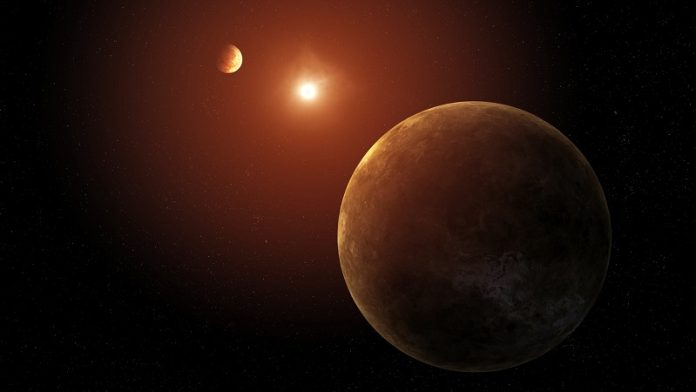
NASA’s Kepler space telescope may be retired, but it’s still a gift that keeps on giving!
Scientists looking at old Kepler data have found an extraordinary solar system with not one, not two, but seven hot planets—and they’ve named it Kepler-385.
This bunch of planets is interesting because each one is getting more heat from their sun than any planet in our own solar system does from our Sun.
Kepler-385 is one of the few known systems that’s so packed with planets—seven in total.
It’s a standout star in a new list from Kepler that includes a whopping 4,400 possible planets, with more than 700 of them having more than one planet in their system.
Jack Lissauer, a researcher at NASA’s Ames Research Center, announced this exciting news.
He said that they’ve created the best list ever of potential planets found by Kepler, complete with details about them. This new list is like a space treasure map that helps scientists understand what these far-off planets are like.
Their findings are waiting to be published in the Journal of Planetary Science, but if you’re eager to sneak a peek, their research is already out on the arXiv preprint server.
In the middle of the Kepler-385 system is a star that’s a bit like our Sun but bigger and hotter.
The two planets closest to this star are just a little larger than Earth and might have rocks and maybe some air around them. The other five planets are much bigger—twice the size of Earth!—and they’re likely wrapped in thick layers of gases.
Thanks to the fancy and improved way the new Kepler catalog was put together, scientists can say a lot about the Kepler-385 system.
While older Kepler lists were all about counting how many planets there might be out there, this new catalog gives us the juicy details on each system, making discoveries like Kepler-385 possible.
So, how did they do it? They took a closer look at the stars themselves and figured out the exact path each planet took as it moved across its star.
What they found was pretty cool: in systems where a bunch of planets are passing in front of their star, their paths—or orbits—are usually more round than in places where there’s just a lonely planet or two.
Kepler stopped its main mission in 2013, but it had an extended run known as K2 that went until 2018. The information it gathered is a treasure trove, and it’s still helping us find new wonders in our galaxy.
Kepler already taught us that there are more planets than stars out there. Now, this latest study is giving us a clearer picture of what those planets and their neighborhoods are like, widening our view of the universe.
This new find is more than just cool science—it’s like getting a glimpse of our galaxy’s diverse neighborhoods. Each of these planets has its own story, and thanks to Kepler, we’re just beginning to hear them.
It’s a reminder of how big and mysterious our universe is, and that there’s so much more out there waiting to be discovered.
Follow us on Twitter for more articles about this topic.



